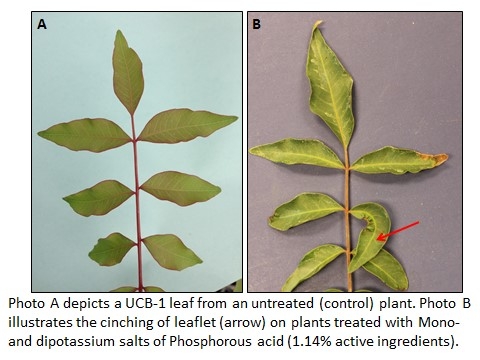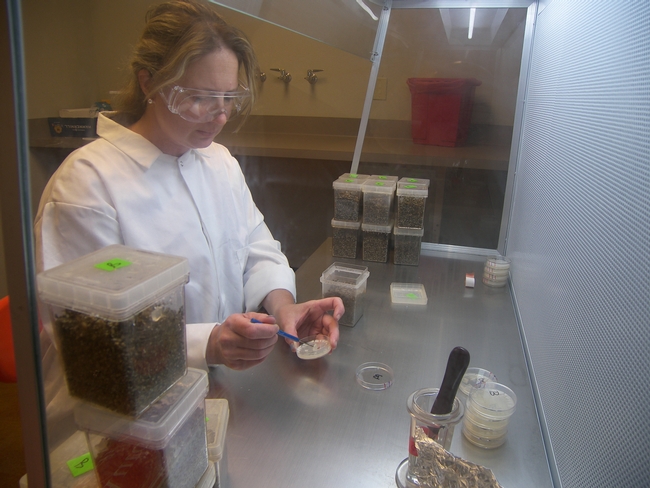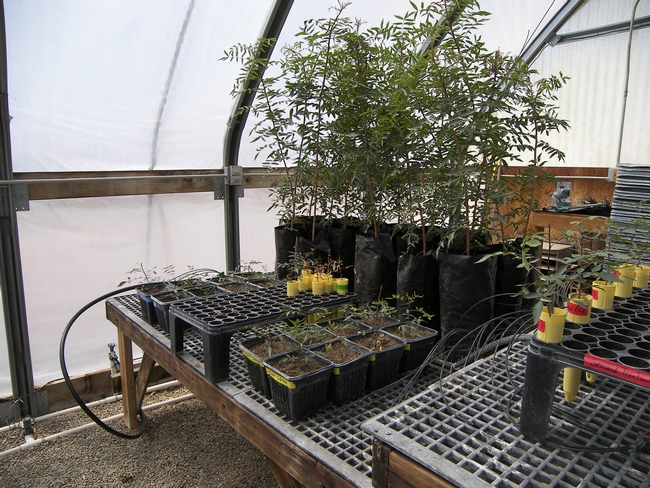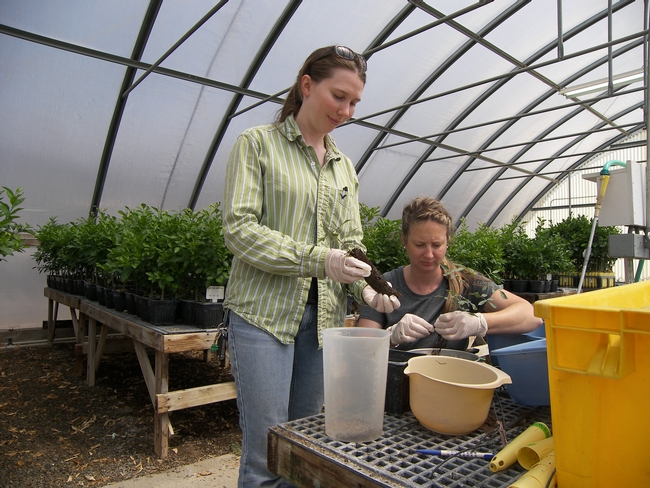Posts Tagged: pistachio
Visiting scientist conducts doctoral research at new LREC pathology lab
Sabrine Dhaouadi, a visiting scientist from Tunisia, will be working with Dr. Elizabeth...
UCCE Tulare County and Lindcove Research and Extension Center co-host College of the Sequoias interns
University of California Cooperative Extension (UCCE) in Tulare County and the Lindcove Research...

SUREGE interns
Implications of foliar phosphite applications on pistachio rootstock
California nut growers have benefited from the use of phosphite products, marketed and sold both as...

Pistachio leaf morphology
Meeting at Kearney helps stakeholders understand and detect Pistachio Bushy Top Syndrome.
Jennifer Randall, Research Associate Professor in the Department of Entomology, Plant Pathology and Weed Science at New Mexico State University provided a presentation on “Pistachio Bushy Top Syndrome: Disease etiology and diagnosis procedures" on April 7, 2015 at Kearney Agricultural Research and Extension Center (KARE).
The presentation was followed by a Q&A session conducted by Randall; Florent Trouillas, Assistant Cooperative Extension Specialist at KARE and in the Department of Plant Pathology at UC Davis specializing in fruit and nut crops; Craig Kallsen, UC Cooperative Extension advisor in Kern County, specializing in citrus, subtropical horticulture and pistachios; Robert Beede, UC Cooperative Extension advisor, emeritus, in Kings County, specializing in horticulture: tree fruit, nuts and grapes; and Elizabeth Fichtner, UC Cooperative Extension advisor in Tulare County, specializing in orchard systems.
Background: In the last few years, a new disease affecting UCB1 rootstocks emerged in CA, AZ, and NM. This disease was named Pistachio Bushy Top Syndrome (PBTS). Scientific evidence in 2014 demonstrated that PBTS is caused by the bacterium, Rhodococcus fascians (Rf). The percentage of rootstock exhibiting symptoms varies widely among plantings. At least 20,000 acres in CA have been affected to some extent. Two strains of Rf have been identified. Each is pathogenic, and they act synergistically to cause more severe disease symptoms. Pistachio growers in CA need to test for the pathogen in their newly planted orchards. This workshop attempted to bring academic, private and governmental diagnosis labs up to date on this new disease. Dr. Jennifer Randall from NMSU presented her group's latest research on the disease biology and detection methodologies.

Question and answer session at Kearney after a presentation on Pistachio Bushy Top Syndrome: disease etiology and diagnosis procedures.
Pistachio plant pathology
Recently, severe root rot and mortality was observed on young potted pistachio rootstock trees...

Dr. Elizabeth Fichtner infests nutritional substrate with Phytopythium.

Pistachio seedlings potted in infested soil from Phytopythium helicoides as part of the requirements for fulfilling Koch’s Postulates to demonstrate pathogenicity of the organism.

John Iniguez from USDA-APHIS conducts a Permit Containment Inspection with Dr. Fichtner at the new Plant Pathology lab at Lindcove REC.

Katie Wilson assists Dr. Elizabeth Fichtner with transplanting pistachio plants into infested potting soil.